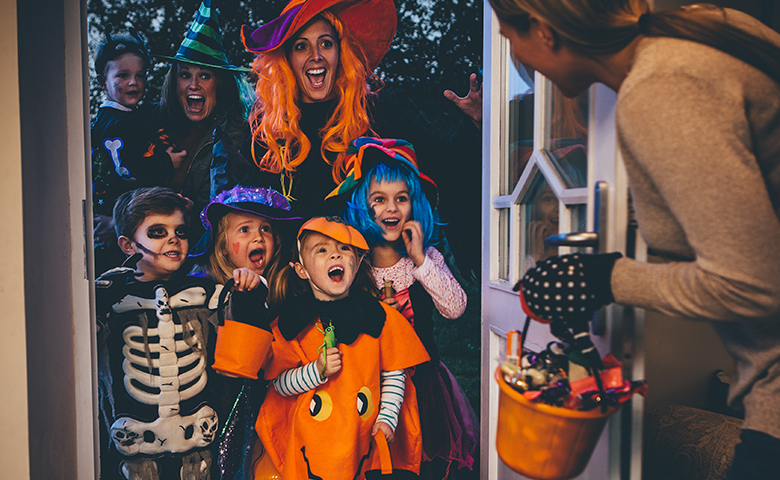At Halloween, children can have a hard time staying focused on anything but racing to the next house for candy. This year, why not try a little SafeStart talk to get them thinking about safety? A quick reminder of these common Halloween human factors and other safety tips can help keep them safe as they go trick-or-treating.
Rushing and slips, trips and falls
Kids are going to want to rush from house to house to ensure they get the best candy. One of the main states that result in injuries is rushing. Put simply, rushing is “going faster than you normally would go.” A quick reminder that the speed at which they arrive at a house will not change the kind of candy they receive and in fact, rushing could actually slow them down if they trip and fall (or worse, get hurt and have to go home). Hopefully, this reminder will help them self-trigger on their rushing when they want to run.
Another consideration for rushing is in the costume selection—you want to make sure it is the right size to prevent trips and falls on the material, as children get excited and like to move quickly and could get tangled up in their costumes. Don’t let them be in a rush to eat their candy either—small, hard pieces of candy can be a choking hazard for children on the go. Plus, a full inspection of the candy by an adult at home is required. In the dark, it can be hard to tell if the package has already been opened.
Complacency
Complacency has a way of making people downplay any risks that surround them (especially children who are typically carefree) and when everyone has their eyes on the prize (candy) it can be hard to remember the hazards that pose a threat to trick-or-treaters’ safety. There are other people to consider on Halloween—especially drivers who aren’t used to an influx of kids walking the streets in the dark. While trick-or-treating is the main priority for kids, it’s important to remember that not everyone celebrates the holiday. Walking in groups and sticking to the sidewalk improves trick-or-treaters’ visibility to drivers.
Work on line-of-fire habits
Safe habits are just as important for pedestrians as they are for drivers. And while you can’t suddenly establish new habits just for Halloween, you can emphasize habits that kids already have. Remind kids to make eye contact with drivers before crossing in front of them—if you’re walking beside them from house to house, this is a good time to practice the habit. In the same way that you made your kids stop and look both ways before crossing the street, make them stop and make eye contact with the driver before their body moves in front of the vehicle. Cross the street at crosswalks where possible. Do an LCR (left-center-right) scan every time you cross the street and keep looking as you cross. Put electronic devices down (this goes for both kids and chaperones), keep heads up and pay attention to everything on the street. And remind children to never dart out into the street or cross between parked cars.
Eyes and mind on task
Choose a costume with face paint or makeup instead of masks when possible, as masks can obstruct a child’s vision for just long enough to put them in danger. Visibility is a huge component of safety for children on Halloween. When they can’t see properly, they are more likely to walk into oncoming traffic.
In order for drivers to keep their eyes on the children, outfit trick-or-treaters with glowsticks or flashlights to make them visible on dark streets. You could also add reflective tape/stickers to their costume and candy sacks to further increase their visibility.
Human factors can affect any person in any place, which is why 24/7 safety is an important component of organizational safety. Talk to your employees, as they need to know they matter not only while they’re at work but outside of work too. Download the PDF version to give to your employees or deliver as a toolbox talk. We’ve also developed some activities to go along with the Halloween human factors PDF. A word search, crossword, and a hidden picture coloring page can help get the safety conversation rolling with kids about Halloween safety. Find all of the resources here and have a safe and happy Halloween!

